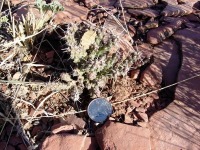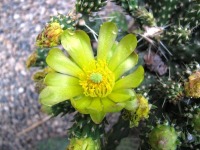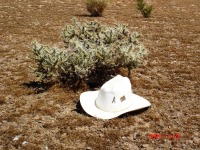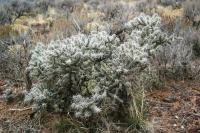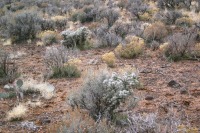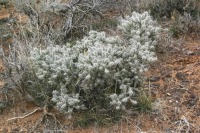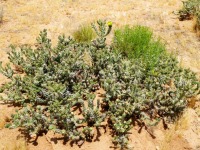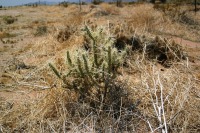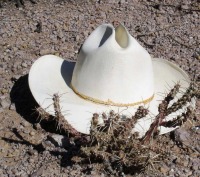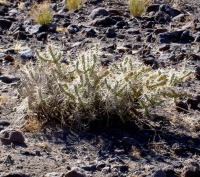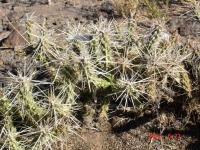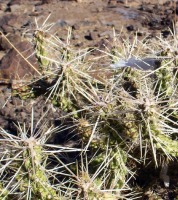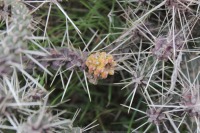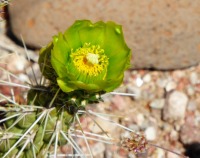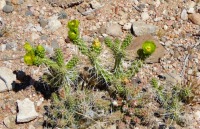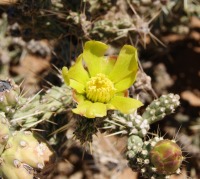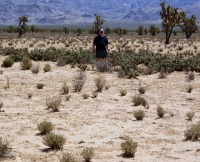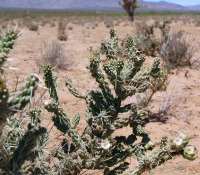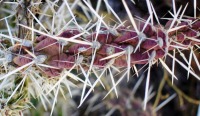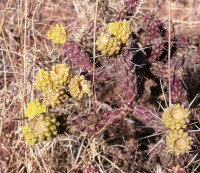G. Engelmann & J. M. Bigelow. 1856 [1857]. Proceedings of the American Academy of Arts and Sciences 3: 307.
Herbarium specimen; Herbarium specimen; Herbarium specimen; Herbarium specimen; Herbarium specimen; Herbarium specimen; Herbarium specimen; Herbarium specimen; Herbarium specimen; Herbarium specimen; Herbarium specimen; Herbarium specimen (submitted as Opuntia whipplei var. enodis); Drawing (The Botany of the Expedition, 1856, plate XXVII)
Original description
Flora of North America treatment
What is Cylindropuntia whipplei?
Cylindropuntia whipplei grows in desert grasslands, juniper-pinyon woodlands, oak and pine forests, and sagebrush scrub from 900-2300 m elevation. It occurs from Nevada and northern Arizona to southwestern Colorado and northern Utah and into New Mexico.
Details
G. whipplei varies in its habit from very small, mat-like shrubs to tree-like shrubs up to 1 m tall. The stems are firmly attached and range from 3 to 9 cm long by 0.5 to 1.5 cm wide. The areoles generally have 3 to 8 white, yellow, or pale red-brown spines, and sheaths are white to pale yellow. Many areoles have 3 to 6 spines with white to yellow sheaths. The flowers and filaments are greenish-yellow with white, yellowish, or pale green styles and stigmas. The fruits are yellow to green, fleshy, and spineless.
G. whipplei has two varieties. The typical variety, G. whipplei var. whipplei, is diploid (2n = 22) and has fruits which are thin-walled (<5 mm thick) and bright yellow with many seeds. G. whipplei var. enodis is tetraploid (2n = 44) and has fruits which form chains and are thick-walled (>7 mm thick), green to dull yellow, and generally sterile or with very few seeds. G. whipplei var. enodis also has shorter, thinner stems, smaller tubercles, and fewer spines on average than G. whipplei var. whipplei.
A population of Cylindropuntia whipplei near Grand Canyon Caverns was originally designated “Opuntia hualpaensis” by Hester in 1943. Plants in this area are a mixture of diploids and tetraploids and are generally morphologically intermediate between G. whipplei var. whipplei and G. whipplei var. enodis. It is therefore hypothesized that this is where G. whipplei var. enodis originated as an autotetraploid (Baker 2016, in press).
G. whipplei hybridizes with G. acanthocarpa in central Arizona (G. ×congesta). It is also known to hybridize with G. leptocaulis, G. imbricata (G. ×viridiflora), and G. echinocarpa. Contrary to the statement in the Flora of North America treatment, G. whipplei x G. echinocarpa is not G. multigeniculata, as morphological analyses have shown G. multigeniculata to be a distinct species in its own right.
